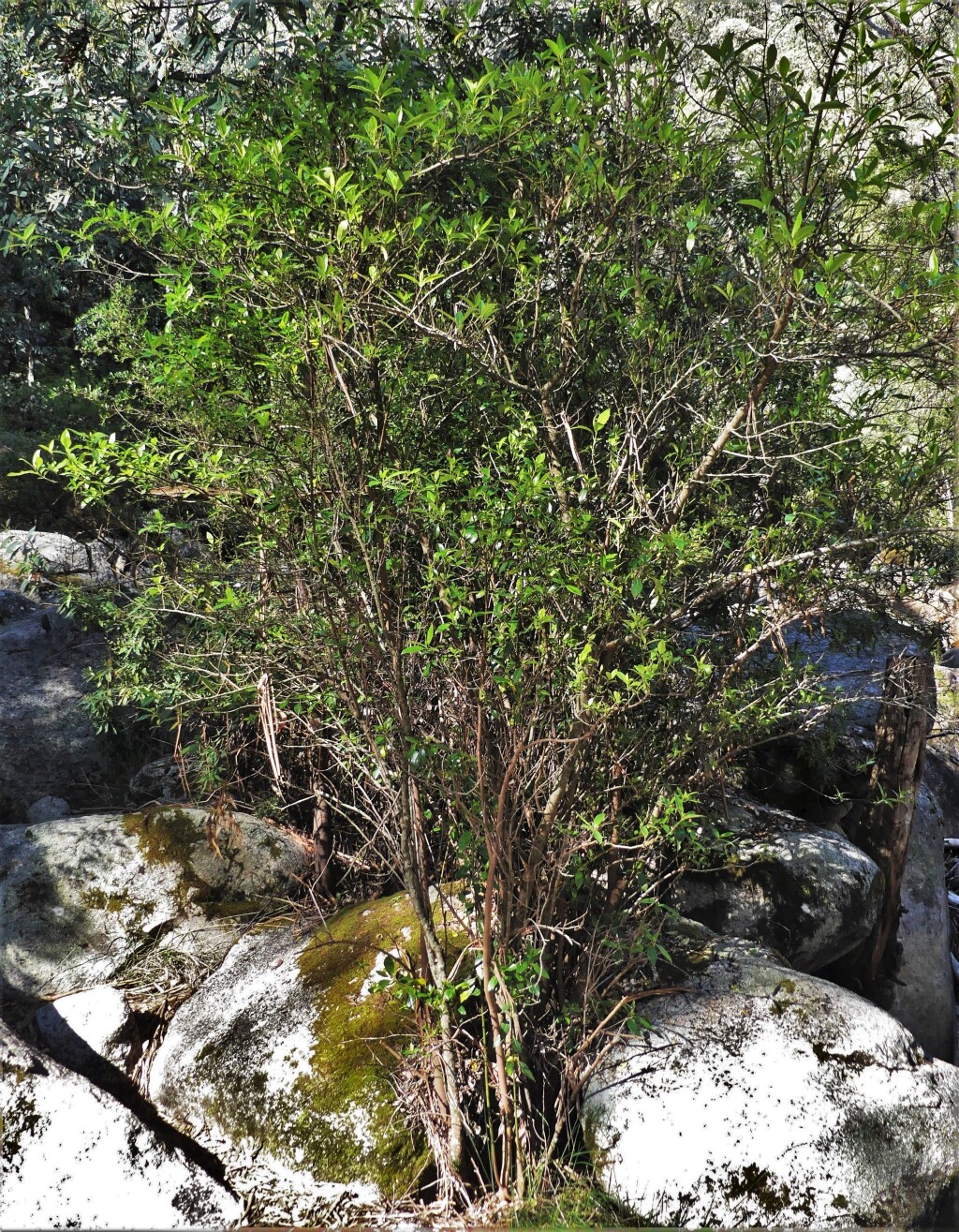Monimiaceae
Trees, shrubs or climbers (not Victoria), monoecious or dioecious, glabrous or hairy. Leaves simple, opposite, with small oil dots, usually aromatic, margins variously toothed, crenate or entire; stipules absent. Inflorescence axillary, terminal, cymes, racemes or panicles, rarely flowers solitary. Flowers unisexual, regular, hypogynous or perigynous; perianth with 4–many segments in 2–many whorls, inner segments sometimes petaloid; stamens 2–many, opening by longitundinal slits, sometimes with apical appendage; staminodes present or absent; carpels numerous, free, sometimes enclosed in the enlarged unilocular receptacle, often opening by upper part falling as a calyptra; ovule 1 per locule. Fruit a drupe, sometimes aggregated, often retained within the expanded receptacle; seeds with copious endosperm.
About 27 genera and 440 species, mostly in the Southern Hemisphere; 8 genera and 26 species in Australia.
Many authors including Cronquist (1981) and Philipson (1993) take a broad view of the family Monimiaceae and prefer to recognise several subfamilies within it resulting in a rather heterogeneous assemblage of plants. It is now generally accepted that many of the previously recognised subfamilies justify recognition at family level and are treated as such (e.g. Atherospermataceae and Siparunaceae).
Foreman, D.B. (1996). Monimiaceae (including Atherospermataceae). In: Walsh, N.G.; Entwisle, T.J., Flora of Victoria Vol. 3, Dicotyledons Winteraceae to Myrtaceae, pp. 25–26. Inkata Press, Melbourne.
 Spinning
Spinning

